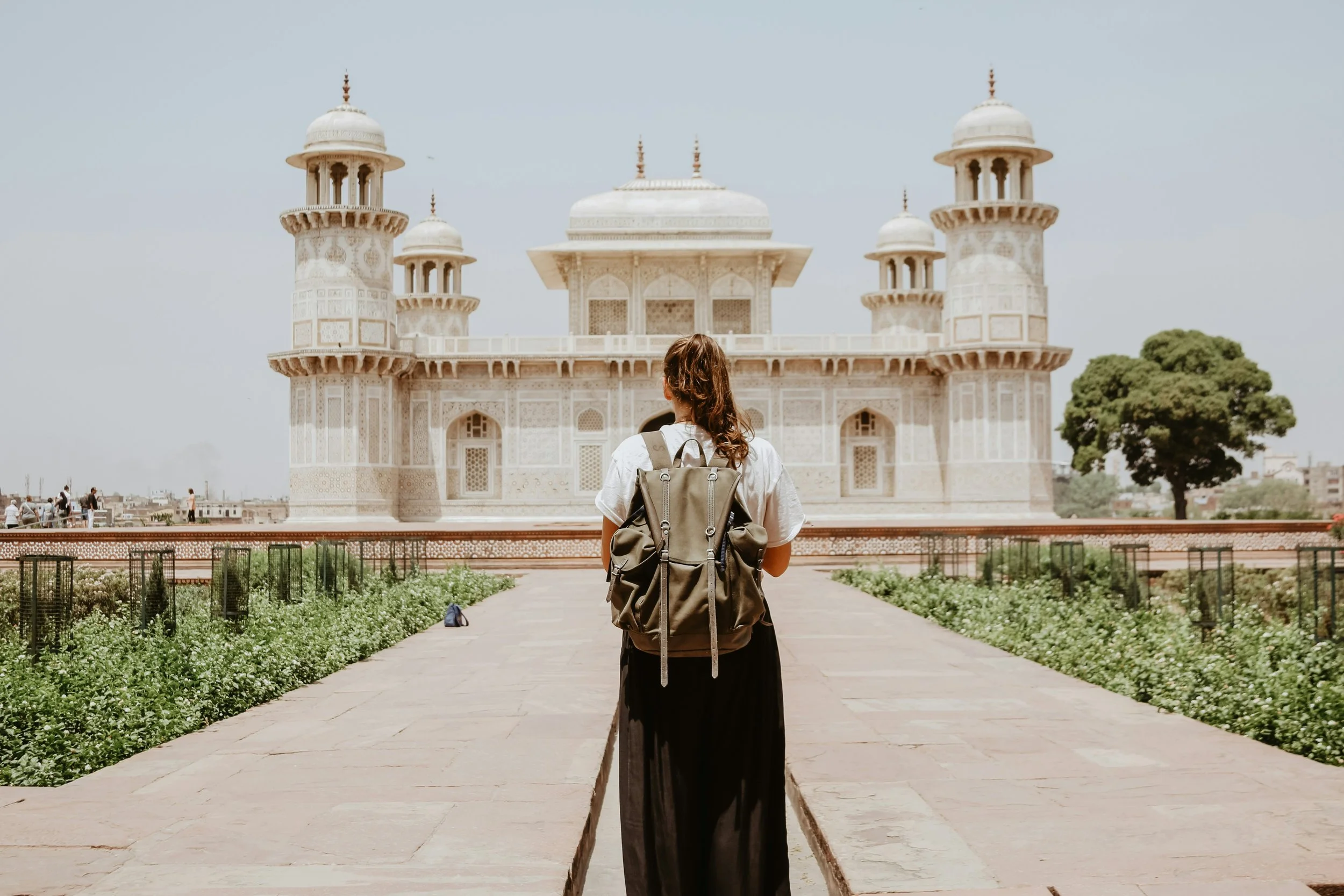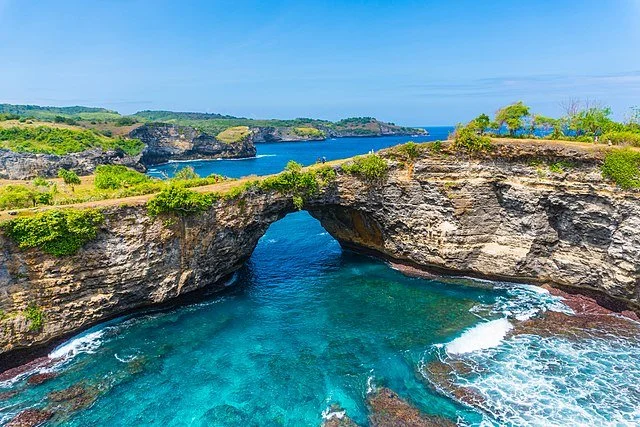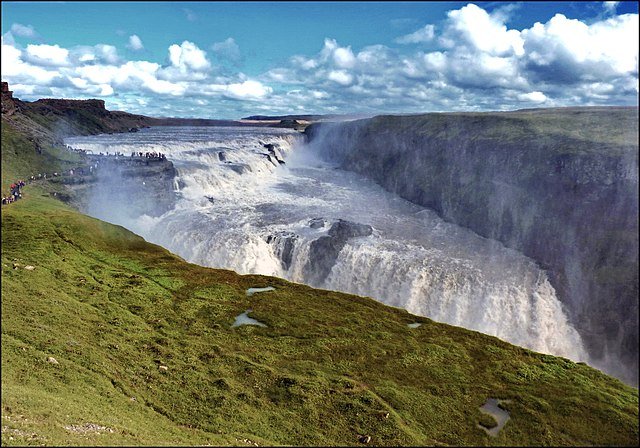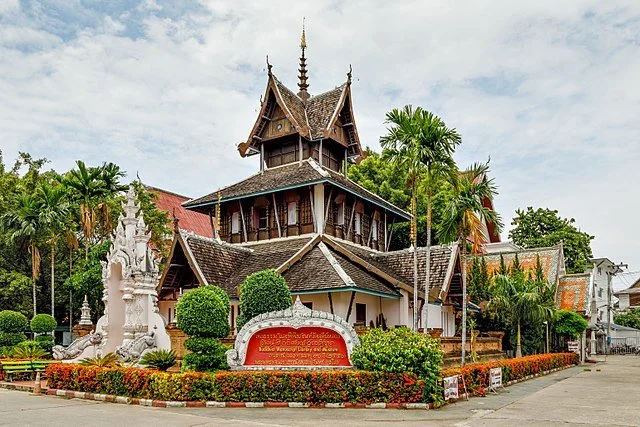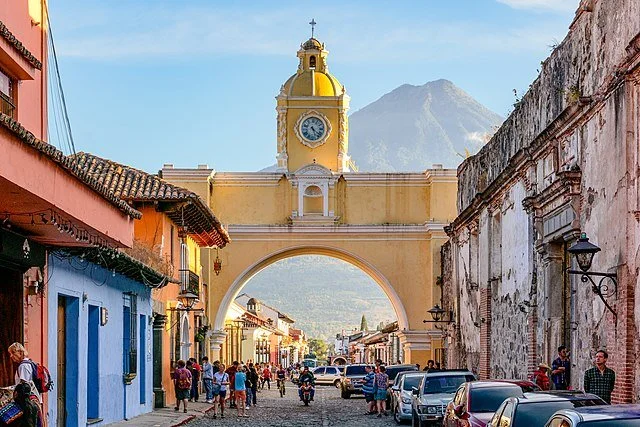Bella Liu
Around the world, solo trips are becoming increasingly popular. Here are some of the safest places for women to explore on their own.
Woman sightseeing alone. Ibrahim . CC-BY-2.0.
Solo travel offers opportunities for both self-discovery and world discovery, an enriching experience that satiates an inner wanderlust just as much as it does an outer one. However, given the high rates of gendered violence around the world, there are certain things that women have to take into heavier consideration — such as a destination’s night-walking safety and rates of sexual assault and abduction — before booking a solo trip. Based on their low crime rates and the unique, worthwhile adventures they have to offer, the places on this list highlight some of the safest destinations for solo female travelers.
1. Bali, Indonesia
Nusa Penida. Aaron Rentfrew. CC-BY-4.0.
Featuring thousands of temples and miles of beaches and forests, Bali offers the solo wanderer countless opportunities to reconnect with nature. Active adventurers can hike alongside numerous natural wonders across the island, sighting waterfalls at the Beji Guwang Hidden Canyon and monkeys at the Ubud Monkey Forest. If you’re drawn to Bali’s aquamarine coastlines instead, scenic beaches like the Tanah Lot and Nusa Penida are renowned swimming and snorkeling spots. There are also opportunities to tour some of the island’s many temples, including Pura Lempuyang and Gunang Kawi, and to take cooking classes on the Tegalalang rice fields. Bali is a popular destination among solo female travelers, especially after it was featured in Elizabeth Gilman’s best-selling memoir “Eat, Pray, Love.” Indeed, solo female travelers attest that Bali is safe for women, citing its low levels of street harassment and high flow of other tourists. It’s also common for solo female travelers to socialize and explore Bali in groups. Bali also has well-developed infrastructure and a ride-sharing app network that’s both popular and reliable, which makes navigating the island generally safe and manageable.
2. Iceland
Gullfoss Waterfall. Patano. CC-BY-3.0.
Iceland has emerged as an increasingly popular travel destination in recent years and for good reason. Travelers have flocked to Iceland to glimpse puffins amidst the fjords, soak in the country’s blue lagoons and tour its volcanoes (which, while more active than usual as of late, are still safe to visit). As for getting to these sites, “the Icelandic Road system is extensive and easy to navigate,” the official Visit Iceland website boasts. A car can get you almost anywhere, and the country’s drivability is a key part of its safety. For solo women, renting a car and driving yourself minimizes the risk of abduction and taxi scams while increasing traveler independence and flexibility. Many tourists say renting a car is the best way to explore Iceland because it enables travel along the Ring Road, an 800-mile scenic route that circles the country and connects its most popular attractions (including Thingvellir National Park, the Geysir geothermal area and Gullfoss waterfall). The Ring Road, specifically, is safe for solo travel because the roads are well-maintained and well-populated with other travelers. In general, Iceland is one of the safest countries in the world. It’s recommended that travelers visit during the summer when daylight lasts longer and the roads are less icy.
3. Chiang Mai, Thailand
Downtown Chiang Mai. Uwe Arenas. CC-BY-4.0.
Thailand is a notably affordable travel destination due to the country’s low labor costs, making it a popular destination of choice for solo travelers. Within Chiang Mai — the largest city in northern Thailand — visitors can see countless sights, including waterfalls and pagodas. Temples like Wat Phan Tao have low admission prices, as do nature excursions like Doi Inthanon National Park. If travelers want to indulge in Thailand’s signature elephant tourism, they can do so ethically at Elephant Nature Park, an animal rescue and rehabilitation center. Thailand is generally safe, with a few exceptions due to civil unrest. But Chiang Mai, a tourist hub, is considered the safest city in Southeast Asia — especially within Chiang Mai’s walled core, the Old City. In fact, many say the most dangerous thing a traveler can do in Chiang Mai is simply cross the street. Driving in Chiang Mai can be chaotic, which is why ride-share apps (specifically a Southeast Asia-based one called Grab) are recommended. “Tuk tuk scams” — deceptively cheap taxi rides — can also be avoided with the use of a ride-share app. In general, it’s recommended that solo female travelers stick to the Old City, where the roads are safer for pedestrians and better-lit at night and visit from November to February to avoid poor air quality during Thailand’s “burning season.”
4. Prague, Czech Republic
View of Prague from the Old Town Hall. Alexander Savin. CC-BY-4.0.
Known as the City of a Hundred Spires, Prague brims with storybook scenery. Beyond the many towers dotting the Czech Republic’s capital city, tourists can also visit the Prague Botanical Garden and the Prague Zoo or even take a brewery tour. If travelers want to take in the ornate architecture that Prague is famous for, Prague Castle, the Charles Bridge and the Old Town Square featuring the Prague astronomical clock are especially rich sites to experience the city’s baroque and gothic past. As a historic city, Prague is compact and walkable. However, that’s not to say that the city doesn’t also have modern amenities to offer, as Prague’s metro and tram are among some of the world’s safest and most reliable public transport systems. The city has plenty of safe hostels, street lighting and low levels of street harassment, making Prague especially safe for solo women.
5. Antigua, Guatemala
Santa Catalina Arch. Chad Davis. CC-BY-2.0.
Although Guatemala as a whole may not be recommended for solo women travelers, the city of Antigua features a safe and vibrant environment. Antigua boasts numerous churches and archaeological ruins worth exploring, including the Cathedral de Santiago and the Santa Catalina Arch. Travelers also have the opportunity to shop for traditional artisan goods (such as custom boots), kayak at Lake Atitlan and even hike the Pacaya Volcano to roast marshmallows. Caffeine addicts will want to tour the De La Gente coffee farm to get a taste of Antigua’s famous coffee scene. Because it’s a travel hotspot, Antigua is safe compared to surrounding areas like Guatemala City. As such, it’s recommended that solo travelers stay within Antigua, which is walkable with well-lit cobblestone streets. However, if walking isn’t a sufficient mode of transportation, solo women are encouraged not to take the traditional “chicken buses” — eccentrically painted school buses — to get from place to place because their routes aren’t direct and can travel outside of Antigua. Rather, women should travel accompanied by a guide and use the reliable shuttle services offered by many hostels.
6. Taipei, Taiwan
Taipei skyline. Shengbo Wu. CC0.
Situated on the north side of the island, Taiwan’s capital city Taipei is a metropolitan hub of art, food and entertainment. Travelers can shop in the Xinyi District or take a trip to the top of Taipei 101 — once the tallest skyscraper in the world — for a panoramic view of the city. The National Palace Museum and the Presidential Palace, each displaying centuries-old artworks and artifacts, are also worth a visit for their valuable insights into the island’s storied history. Taipei is also famous for its night markets, where travelers can snack on traditional street foods like green onion pancakes and sweet rice cakes as they shop for trinkets beneath strings of red lanterns. The Shilin Market and the Raohe Street Market are particularly renowned. Taipei is very safe — violent crime against travelers is rare, and the streets are usually busy and well-lit. It is generally safe for women to get around solo, even at night.
Overall, a destination can be considered safe for solo female travelers if it is walkable, well-developed in infrastructure well-lit at night and bustling with other like-minded travelers. Although they have to take these additional factors into greater consideration, it’s not impossible for women to also enjoy the benefits of solo travel without significant fear for their safety. But any solo adventurer, regardless of gender, should take normal precautions when traveling. It’s important to not act recklessly and to always use common sense, especially in a foreign environment; opportunistic crimes like pickpocketing and drink-spiking can happen anywhere and to anyone.
Bella Liu
Bella is a student at UC Berkeley studying English, Media Studies and Journalism. When she’s not writing or working through the books on her nightstand, you can find her painting her nails red, taking digicam photos with her friends or yelling at the TV to make the Dodgers play better.

